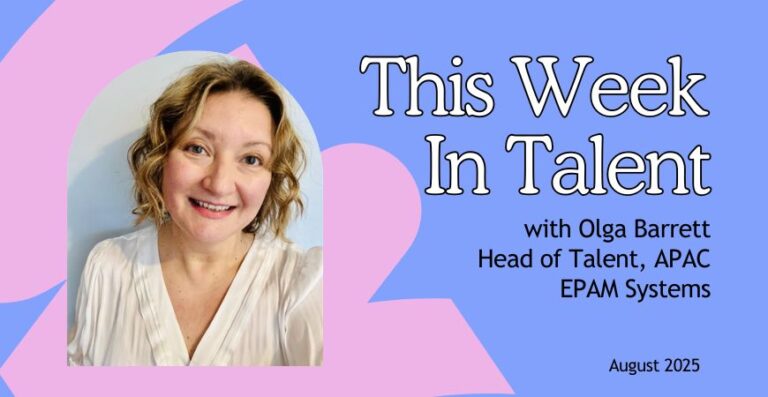Hi, I am De! Your September TWIT Guest Editor.
With privilege comes great responsibility, is an adage which has unwavering poignance in the world of employment. I currently have this privilege by donning the leader hat on a People Transition project bringing ten organisations into one — with 920 roles open at once. It has me thinking a lot about the motivators and feelings behind people looking to secure a role, why people hit the apply button? What it means to step forward? And, how it may impact their lives. I don’t know about you, but my favourite part of being involved in the talent swim lane is when we get to offer a person the role, this has and never will grow old on me.
Here are the articles that I have found myself down the rabbit hole with, exploring ways to get more from my attraction and sourcing strategies, looking through new lenses to read cover letters, and ways to tweak the questions I ask to get to know why someone has stepped forward for an opportunity.
- Articulating Your EVP to Specific Talent Personas
- How to Attract the Right People to your Organisation — Danton HR
- Why The ‘Identity’ Of Your Organization Really Matters (forbes.com)
- Person-Organization Fit – an overview | ScienceDirect Topics
- Explaining Workforce Intelligence to your CEO
Here are a few thoughts and takeaways to tuck in your top pocket until next week:
- Is organisational fit not the same as “culture” fit? We consider “culture fit” a subsection of your overall corporate structure and practice of recruitment. Whereas “culture fit” is a loose matching of relatively intangible values, behaviours and interpersonal judgments, organizational fit refers to relationships and how those behaviours, values, and points of view interact.
- You need to create an interview process that hinges as much on organisational similarities as it does on skills matching. There are two terms to keep top of mind when connecting organisational identity and someone’s identity. They are:
- Person-organization – This type of fit is the extent to which an individual’s values, beliefs, and interests align with the organisation’s (generally understood as the individuals’ dominant or collective values, interests, and beliefs).
- Person-job – This type of fit includes an individual’s knowledge, skills, and ability to carry out the duties and functions required or desired of the position.
If research has shown that individuals with both person-organisation and person-job fit perform better and are more content with their positions, meaning we have recruited them into the right role. Hiring an organisational fit means the candidate will feel at home in that role. They’ll be happier and more productive and want to stay longer and grow with that organisation. Read more about my thoughts on this here.
I am still curious …If we know organisational identity connects to a person’s identity, how do we use this feeling to attract the right people to your — and eventually their — great place of work? Is it now – Right role, right time, right person, right organisation?
Until next week… De








